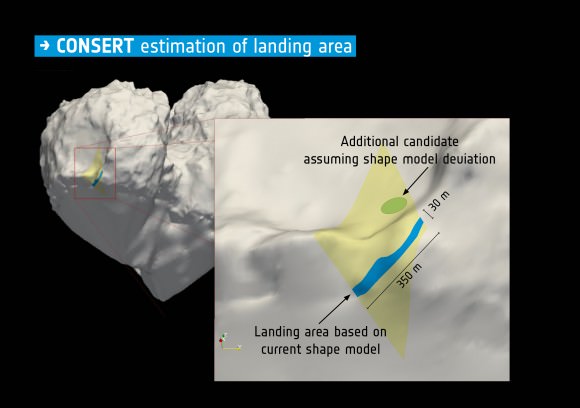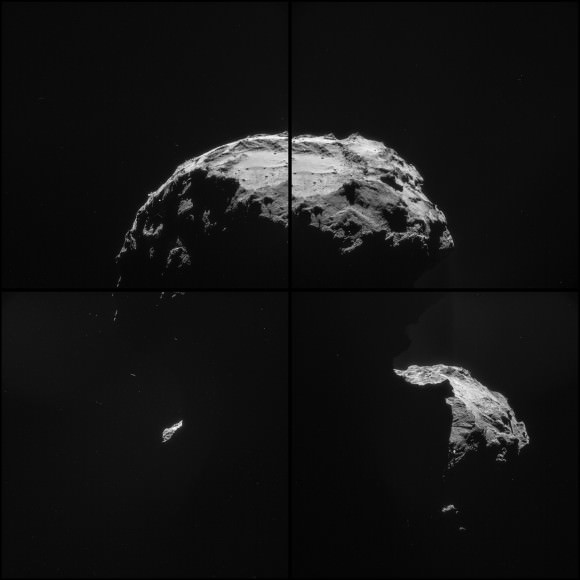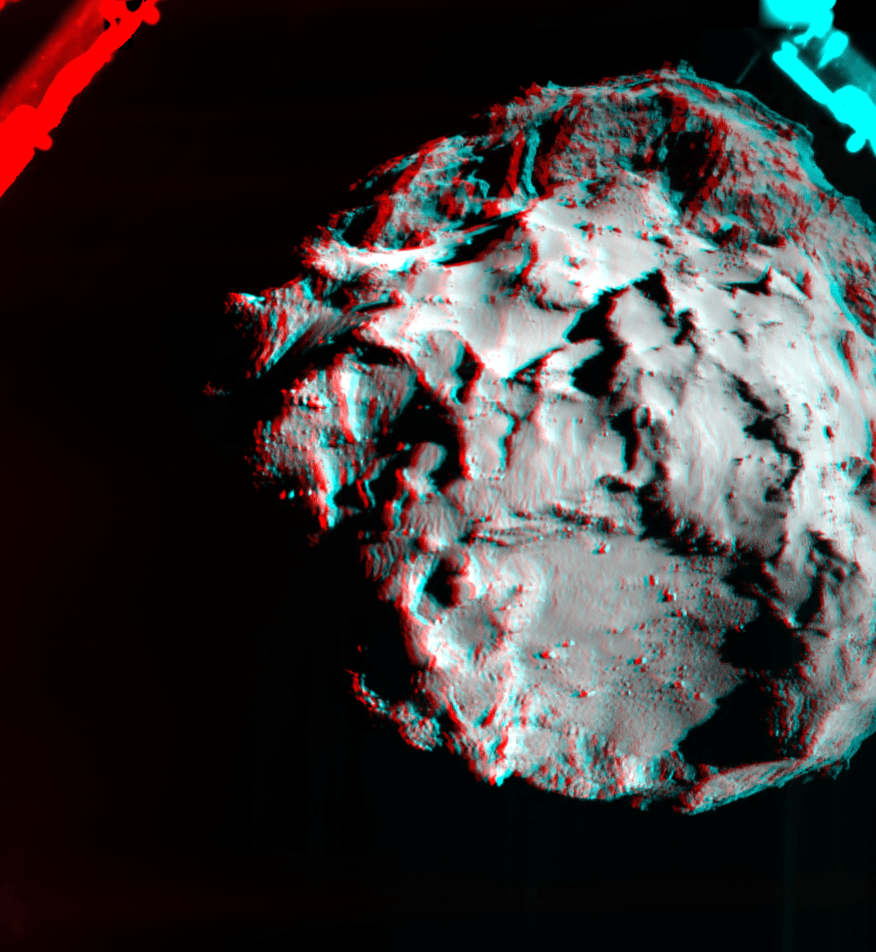The first soft comet landing Nov. 12 showed us how space missions can quickly drift to the unexpected. Philae’s harpoons to secure it failed to fire, and the spacecraft drifted for an incredible two hours across Comet 67P/Churyumov–Gerasimenko before coming to rest … somewhere. But where? And can the orbiting Rosetta spacecraft find it?
That’s been the obsession of the European Space Agency for the past couple of weeks. Controllers have pictures from Philae during its descent and brief science operations on the surface. They’ve managed to capture the little lander in incredible photographs from Rosetta. But the key to finding Philae will likely come from a different experiment altogether.
The experiment is called the Comet Nucleus Sounding Experiment by Radio wave Transmission (CONSERT) and is a piece of work between both lander and orbiter. Rosetta sent radio signals to Philae on the surface to get a better sense of what the insides of 67P are made of. But it turns out it can also be used to pinpoint the lander.
ESA recently released a landing zone of where, based on CONSERT data, it believes the lander came to rest. The next step will be to get the Rosetta spacecraft to examine the area in high-definition.

“By making measurements of the distance between Rosetta and Philae during the periods of direct visibility between orbiter and lander, as well as measurements made through the core, the team have been able to narrow down the search to the strip presented in the image shown above,” ESA stated. “The determination of the landing zone is dependent on the underlying comet shape model used, which is why there are two candidate regions marked.”
Finding Philae is not only a goal to fulfill curiosity, but also to learn more about the comet itself. The team needs to know where the lander is sitting before they can fully analyze the CONSERT data, they said. So the search continues for the hibernating lander, which right now is in a shady spot and unable to transmit status updates since it can’t get enough sunlight to recharge. (This could change as 67P gets closer to the Sun, but nobody knows for sure.)
Rosetta, meanwhile, is in perfect health and continues to transmit incredible pictures of the comet, such as this one below released a couple of days ago. The montage you see includes the zone where Philae was supposed to have touched down, but it will take higher-resolution images from the Optical, Spectroscopic, and Infrared Remote Imaging System (OSIRIS) to get a better look.
Source: European Space Agency (here and here)


